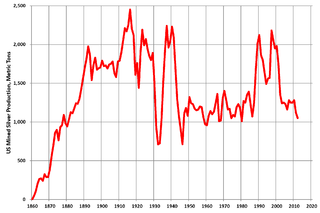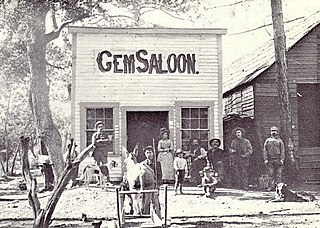
The Keane Wonder Mine and mill is an abandoned mining facility located within Death Valley National Park in Inyo County, California. It is located in the Funeral Mountains east of Death Valley and Furnace Creek, California

The Keane Wonder Mine and mill is an abandoned mining facility located within Death Valley National Park in Inyo County, California. It is located in the Funeral Mountains east of Death Valley and Furnace Creek, California

The mine was dug during the early 1900s Death valley mining boom. Neighboring mines with names like Skidoo, California and Rhyolite, Nevada competed to pull as much gold out of the ground as possible. This boom slowed as a result of the Panic of 1907 and paused when the area was designated a National Monument by President Herbert Hoover. Mining in the valley did not stop completely until an increasing series of government interventions eventually resulted in Death Valley's 1994 designation as a National Park. The last active mine in Death Valley closed in 2005. [1]
The location was discovered by a miner named Jack Keane. Keane and a partner named Domingo Etcharren had scouted the area, called Chloride Cliffs, and had located a potential silver mine. Etcharren eventually left while Keane stayed behind to scout the area more thoroughly. As Etcharren was leaving he noticed an outcropping of quartz, which can often be found near gold deposits. When Keane investigated further, he discovered gold. Keane named the find "Keane's Wonder" and the two miners quickly sold an option on the claim to a New Yorker named Joseph DeLamar.
The discovery caused a brief gold rush, which was soon eclipsed by a larger find further north. DeLamar was disappointed with the gold his employees found and forfeited the option. This happened with a second investor as well. It was not until 1906 when investors John Campbell and then Homer Wilson turned the find into a major mine. The mine turned out to be a profitable operation. Etcharren used his share to purchase a store, while Keane was later involved in two shootings and was imprisoned in Ireland for murder. [2]
Homer Wilson moved to the mine site with his family, and created two towns in the area called Keane Springs and Chloride City, California. Both towns failed within months of their founding in April, 1906. Despite the failure of the towns, the mine continued to be profitable throughout the Panic of 1907 and the subsequent depression. It was limited only by a lack of water and the extremely high heat in the valley, which forced Wilson to have the miners work at night. The mine's aerial tramway became an attraction, and a railroad was briefly built in the area to connect with the Tonopah and Tidewater Railroad. However, the mine was embroiled in a long legal controversy after a financial maneuver involving the failed State Bank and Trust Company of Nevada. The mine had largely been tapped out by 1912, and it was closed that year after being sold. [2]
The Keane Wonder Mine was among the most successful gold mines in the valley and followed the course of a rich vein of ore. The miners attempted to remove as much of the ore as possible, and as a result dug out large areas, with only a few pillars to keep the mine from collapsing. This has led to the instability of both the mine and the land above it, and has led the National Park Service to close the area to visitors.
The presence of toxic chemicals, such as lead and mercury, which are by-products of processing, and the detection of cyanide, which was used to process gold ore, added to the park closing the mine area. [3]
In addition to the mine, a gravity-powered aerial tramway and a stamp mill were built on the site. Both of these structures were popular with tourists, but have suffered from neglect, but the National Park Service reopened the mill and mine site to visitors in November 2017.

Death Valley National Park is an American national park that straddles the California–Nevada border, east of the Sierra Nevada. The park boundaries include Death Valley, the northern section of Panamint Valley, the southern section of Eureka Valley and most of Saline Valley.

Bodie is a ghost town in the Bodie Hills east of the Sierra Nevada mountain range in Mono County, California, United States. It is about 75 miles (121 km) southeast of Lake Tahoe, and 12 mi (19 km) east-southeast of Bridgeport, at an elevation of 8,379 feet (2554 m). Bodie became a boom town in 1876 after the discovery of a profitable vein of gold; by 1879 it had established 2,000 structures with a population of roughly 8,000 people.

Skidoo was an unincorporated community in Inyo County, California. The geographical location of the old town site lies at an elevation of 5,689 feet. Skidoo is a ghost town located in Death Valley National Park. It is on the National Register of Historic Places.

The Comstock Lode is a lode of silver ore located under the eastern slope of Mount Davidson, a peak in the Virginia Range in Virginia City, Nevada, which was the first major discovery of silver ore in the United States and named after American miner Henry Comstock.

Rhyolite is a ghost town in Nye County, in the U.S. state of Nevada. It is in the Bullfrog Hills, about 120 miles (190 km) northwest of Las Vegas, near the eastern boundary of Death Valley National Park.

Empire Mine State Historic Park is a state-protected mine and park in the Sierra Nevada mountains in Grass Valley, California, U.S. The Empire Mine is on the National Register of Historic Places, a federal Historic District, and a California Historical Landmark. Since 1975 California State Parks has administered and maintained the mine as a historic site. The Empire Mine is "one of the oldest, largest, deepest, longest and richest gold mines in California". Between 1850 and its closure in 1956, the Empire Mine produced 5.8 million ounces of gold, extracted from 367 miles (591 km) of underground passages.
The Silver Valley is a region in the northwest United States, in the Coeur d'Alene Mountains in northern Idaho. It is noted for its mining heritage, dating back to the 1880s.
Chloride City is a ghost town in Inyo County, California, United States. It is located 8.5 miles (14 km) north-northeast of Beatty Junction, at an elevation of 4,770 ft (1,450 m). The former settlement is in Death Valley National Park.

Mercur is a historical hard rock mining ghost town in Tooele County, Utah, United States. In 1891, it became the site of the first successful use of the cyanide process of gold extraction in the United States, the dominant metallurgy today. Its elevation above sea level is approximately 2,042 m. The nearby Mercur Gold Mine was re-opened by Barrick Gold in 1985, with mining operations again coming to an end in 1997. The reclamation and restoration project was set to continue up to 2010.

Silver mining in the United States began on a major scale with the discovery of the Comstock Lode in Nevada in 1858. The industry suffered greatly from the demonetization of silver in 1873 by the Coinage Act of 1873, known pejoratively as the "Crime of 73", but silver mining continues today.

The Cerro Gordo Mines are a collection of abandoned mines located in Cerro Gordo in the Inyo Mountains, Inyo County, near Lone Pine, California. Mining operations spanned 1866 to 1957, producing high grade silver, lead, zinc ore, and more rarely gold ore and copper ore. Some ore was smelted on site, but larger capacity smelters were eventually constructed along the shore of nearby Owens Lake.
Gold mining in Colorado, a state of the United States, has been an industry since 1858. It also played a key role in the establishment of the state of Colorado.
Reilly is a former settlement in Inyo County, California. It was located on the west side of the Panamint Valley, at an elevation of 2582 feet. Reilly was a silver mining community in the late 19th century.

The Johnson Lake Mine is a former tungsten mine located within the boundaries of Great Basin National Park in eastern Nevada. Located on the east slope of the southern Snake Range at an elevation above 10,000 ft (3,000 m), the 100 acres (40 ha) historic district was listed on the National Register of Historic Places in 1995.
Noonday Camp, also known as Mill City, Noonday City, and Tecopa, is a ghost town located in the Mojave Desert east of Tecopa in Inyo County, California.
Golden is a ghost town in Box Elder County, Utah, United States. It is located 6 miles (9.7 km) west of Park Valley, near the southern base of the Raft River Mountains.
Kearsarge or Kearsarge City is a former mining settlement in Inyo County, eastern California. It was located high on the east slope of the Sierra Nevada, near Kearsage Pass, 8 miles (13 km) west of present-day town of Independence, California.

The Britannia Mines Concentrator is a National Historic Site of Canada. The large, inclined gravity mill was built on the northwest side of Mount Sheer to assist the transfer of copper ore through the chemical and mechanical processes of the plant. It is a landmark in Britannia Beach, British Columbia some forty-five kilometers north of Vancouver.

Manchester was a mining town in the Los Burros Mining District in the southern Big Sur region of Monterey County, California from about 1875 to 1895. The town was reached by a 20 miles (32 km) road from King City to Jolon. From Jolon travelers could ride or take a stage or wagon to the Wagon Caves, followed by a difficult 14 miles (23 km) trail over the steep Santa Lucia Mountains to the site, about 4 miles (6.4 km) inland of Cape San Martin. Prospecting began in the area in the 1850s.

The Saline Valley salt tram is located in Inyo County, California, United States. The electric aerial tramway was constructed from 1911 to 1913 to carry salt from the Saline Valley over the Inyo Mountains and into the Owens Valley. Covering a distance of 13.4 mi (21.6 km), it operated sporadically from 1913 to 1935 for four different companies. During its operation, it was the steepest tram in the United States.